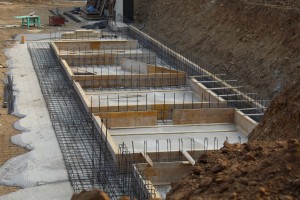You have been suffering without an end in sight and are upset about being trapped by pain. You need to do something different. I have witnessed hundreds of patients become pain free over a period ranging from 6 weeks to several years. The DOC process is a framework intended to organize your thoughts and enable you to create your own solution. This first stage lays the foundation for your journey.

Step 1: Learn about chronic pain
- It’s a complex neurological problem.
- It has devastating effects on your life.
- Mental and physical pain are processed in a similar manner.
- Mental pain has more impact on your life because it creates physical symptoms by altering your body’s chemistry.
- Understanding Pain: What to Do About it in Five Minutes – A concise overview of chronic pain.
Step 2: Expressive writing
- The writing is the foundation for the rest of the process. Begin today.
- There are over 2000 research papers documenting its effectiveness.
Step 3: Active meditation
- Drawing attention to a sensation connects you with the present moment.
- It’s a reprogramming tool that shifts you off of your pain circuits and calms you.
Step 4: Sleep
- It’s the cornerstone of the solving your pain
- Real changes won’t occur without adequate sleep
Step 5: Not sharing your pain
- Your brain will develop wherever you place your attention.
- Don’t discuss your pain with others.
- Talking about your problems reinforces these unpleasant circuits. Not sharing your pain
Your family
Solving chronic pain is a family affair. ALL families deeply trigger each other, which invariably increases the pain. (1) We can implement many different interventions but the family dynamics are often (usually) overwhelming. I’d like you to visualize you and your family sitting in the office with me. I’ve evaluated you and we’re coming up with a plan. Addressing your closest relationships is the starting point. Click this LINK to begin your journey with your family.

Other Considerations
- You can’t control most stressors in your life, but you can control your reaction. The eye of the storm
- Remember to laugh and play, which is also part of Stage 2.
- Strive to exercise for at least 30 minutes 5 days per week. Make sure you enjoy, and mix it up. Consider joining a group fitness class or gym. During this initial stage, the exercises should be light and enjoyable. Increasing your strength, flexibility, and endurance will gradually become more of a focus.
- Eat a healthy diet full of colorful, whole foods, largely plant-based. Aim to fill you plate with 1/2 fruits and veggies, 1/4 whole grains, and 1/4 lean proteins. Drink water and avoid sugary beverages. Save special occasion foods for special occasions. Shop around the perimeter at the grocery store and avoid the aisles, where there tends to be more processed and packaged food. Don’t shop when you are hungry. Don’t keep unhealthy food in your house. Downsize your plate and bowl size. Plan meals ahead. Eat food and enjoy it!
Initially, this will be difficult in the presence of unrelenting pain and anxiety. Food is soothing. Learn to appreciate the experience and eating more healthfully will evolve. Patients often get focused on weight loss. It’s an added stress that shouldn’t be an initial priority.
Become your own inspiration
Many of these recommendations were created by a family practitioner who became inspired by watching so many of my patient’s successes. I am saying “my patients” in a tongue-in-cheek manner. You are the creator of your own success. The DOC process presents a framework that will allow you to find your own answers.
People wonder why I am so passionate about this process. It is because I’m inspired daily by my patients. The resiliency of the human spirit is incredible. I’m shocked by the depth of misery experienced by many of my patients and amazed at the capacity to turn it all around. I’m honored to be able to contribute my experience to help you begin your journey, but you are the ones that can and do regularly pull off almost miraculous turnarounds to enjoy a productive and fulfilling life. The one factor that predicts success is your willingness to engage with these concepts. Inspire yourself and those around you. You get to pass through this life only once.
Charley’s Story – After 17 physicians in three months without success, he has been pain free for years
Resources
Glossary – Intended as a resource for the audio version of Back in Control
Books
- Back in Control: A Surgeon’s Roadmap Out of Chronic Pain by David Hanscom
- The Talent Code: Greatness isn’t Born. It’s Grown. Here’s How. by Dan Coyle
- Feeling Good: The New Mood Therapy by David Burns
Helpful websites
- Unlearn Your Pain
- STOMP Swedish Handout (Structuring Your Own Management of Pain)
References
- Burns, JW, et al. Temporal associations between spouse criticism/ hostility and pain among patients with chronic pain: A within-couple daily diary study. Pain (2103); 154: 2715-2721.

